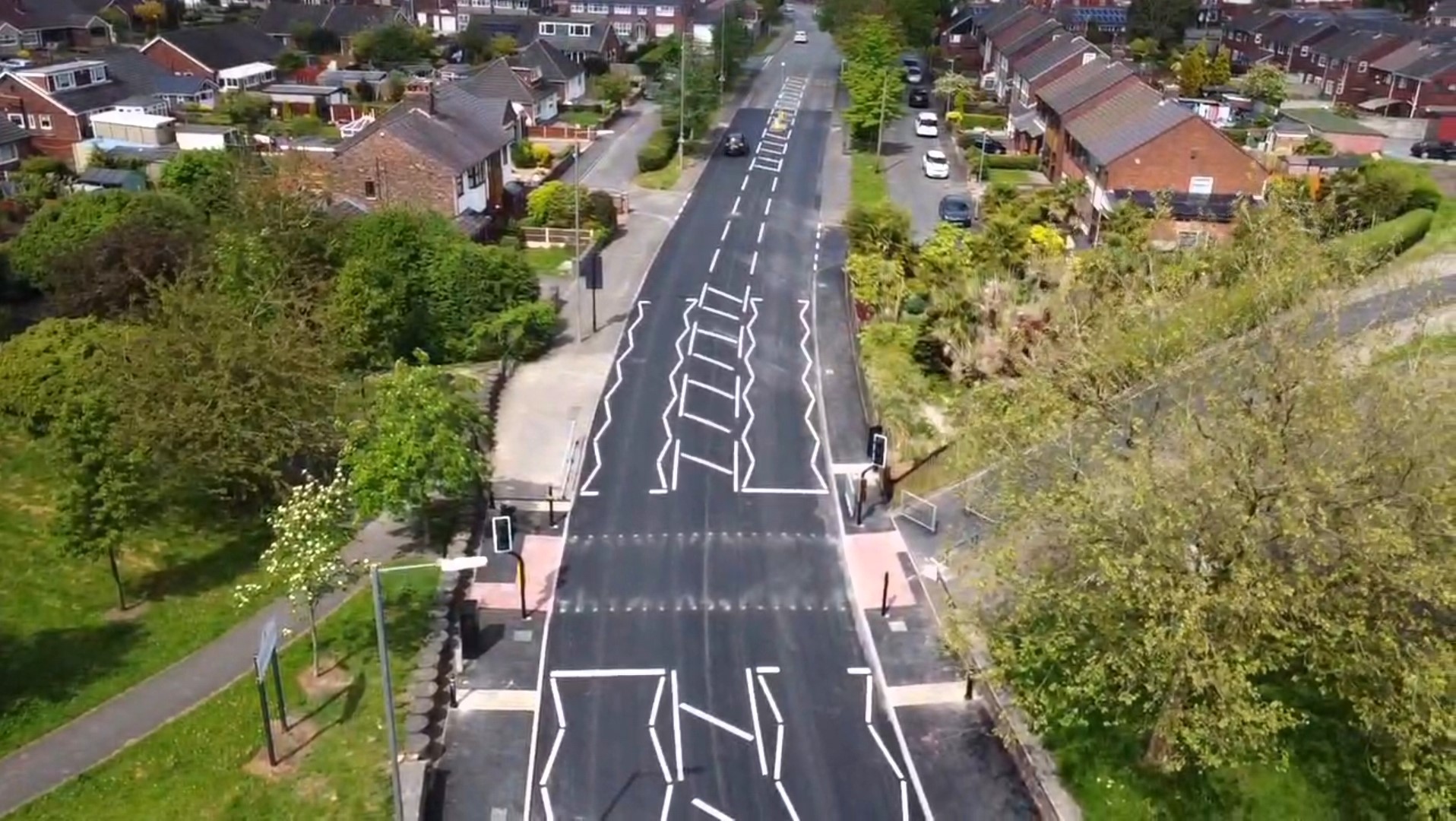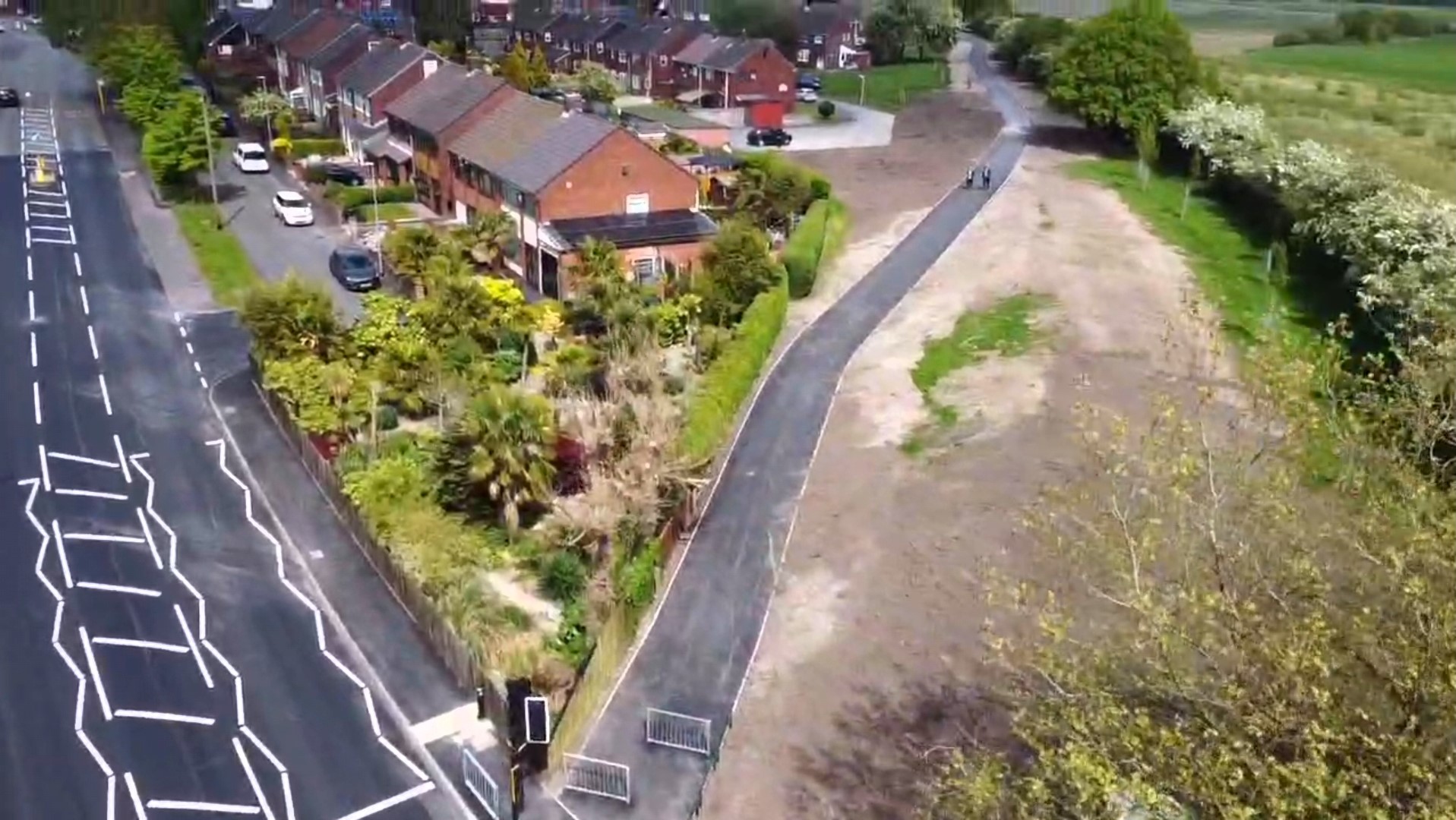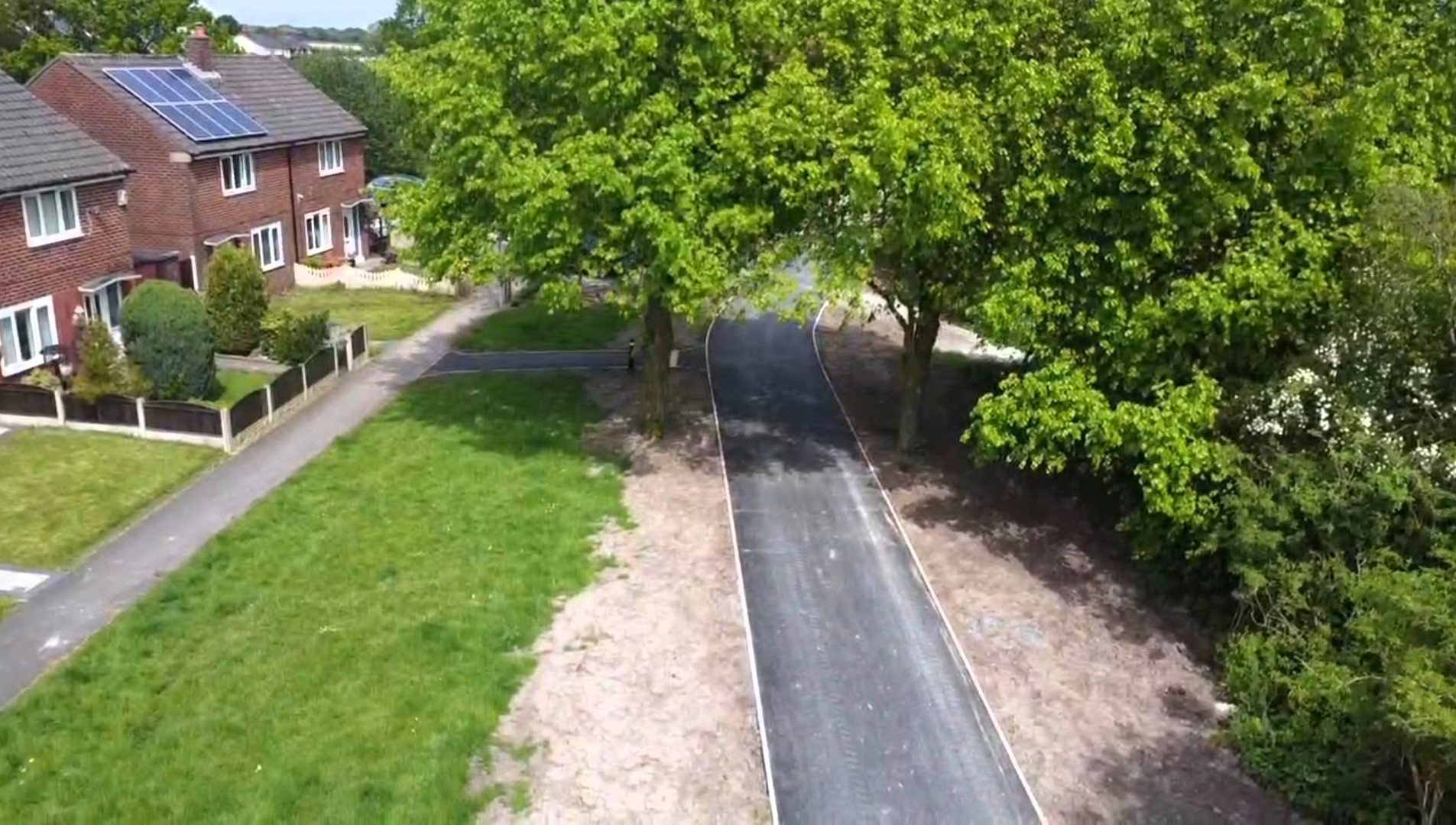The Clockface Road project involved constructing a 300 metre long, 3 metre wide shared cycleway and footpath with accompanying ducting and boxes for street lighting. Additionally, the project included removing a Pegasus crossing on Clockface Road and installing a new toucan crossing with the necessary ducting chambers, NAL sockets, and tactile paving. The scope also extended to planing off and resurfacing a 1000 square meter section of carriageway.
One significant challenge was encountered during the last 50 meters of the cycleway construction, which required maintaining two public rights of way. This involved a busy footpath, with one path crossing and the other running parallel to the construction site. To address this, the footpath was constructed in two halves to ensure continuous public access. Half of the path was stoned up to maintain access while work continued on the other half. Additionally, a Geogrid was installed to protect nearby tree roots.
Site management required extensive coordination between George Cox and St Helens Council due to the basic drawings provided and the evolving nature of the project. The initial design for the cycleway, which included digging out, dealing with tree roots, and reshaping the embankment, proved infeasible. Continuous discussions and collaboration led to the development of alternative construction methods to meet the project requirements. Local residents’ requests for two additional footpaths in flood-prone and muddy areas were also considered and approved by the council.
Effective traffic management was crucial due to the busy nature of the area. Two-way traffic lights were manned during peak times to manage flow, and a temporary push-button crossing was installed to ensure pedestrian safety throughout the project.
Health and safety were paramount, especially after a council-conducted trial hole revealed contamination in one area. This required a revision of the Risk Assessment Method Statements (RAMS) and the use of disposal face masks to ensure worker safety.
Environmental sustainability was a key focus. All topsoil was reused on-site, eliminating the need to transport it off-site or bring in new soil. Recycled materials were also utilised, including recycled MOT for the sub-base layer of the cycleway.
The project contributed significantly to social value. A post box was refurbished and relocated to Clockface Road, with the council planning to install a defibrillator nearby. Surplus mud and leaf mould were used to alleviate flooding in the area. Additionally, leftover pallets were donated to St Helens in Bloom to create community planters, and potholes on unadopted roads were filled using surplus materials from the project.
Cost management was optimised by reusing the topsoil, saving approximately 300 cubic meters from being tipped off-site. This also allowed the footpath to be raised by 50 millimetres, facilitating better water drainage.
The project was met with high satisfaction from both the council and local residents, receiving numerous compliments for its execution and the added community benefits. The successful collaboration, effective management of challenges, and focus on sustainability and social value made this project a notable success.











